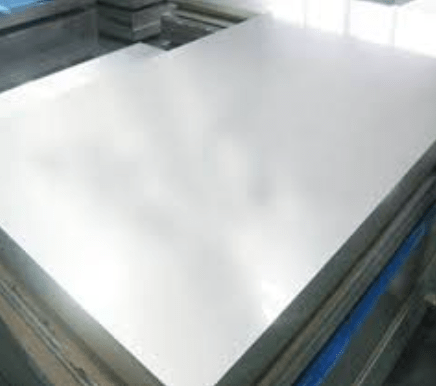Stainless Steel 409 is a ferritic steel commonly used in automotive exhaust systems and other applications where resistance to corrosion and high-temperature oxidation is essential. Let’s delve into the corrosion resistance of Stainless Steel 409 in more detail:
Composition:
Stainless Steel 409 is primarily composed of iron, chromium, and manganese. The key element in providing corrosion resistance is chromium, which forms a passive oxide layer on the surface of the steel, protecting it from environmental factors.
Corrosion Resistance:
Oxidation Resistance:
- Stainless Steel 409 offers good resistance to high-temperature oxidation. The chromium content in the alloy forms a protective oxide layer at elevated temperatures, preventing further oxidation.
Corrosion in Mild Environments:
- Stainless Steel 409 provides satisfactory corrosion resistance in mild environments such as rural and urban atmospheres.
- It resists atmospheric corrosion and mild corrosive agents, making it suitable for automotive applications, where exposure to road salts, moisture, and other environmental factors is common.
Chloride Resistance:
- While Stainless Steel 409 is more corrosion-resistant than carbon steel, it is less corrosion-resistant in chloride-containing environments than austenitic stainless steels like 304 or 316.
- Prolonged exposure to chloride-rich environments, such as coastal areas with salt spray, may lead to localized corrosion.
Sulfide Atmospheres:
- Stainless Steel 409 may face challenges in environments with high concentrations of sulfur compounds. Exposure to sulfur-containing atmospheres can result in corrosion, especially at elevated temperatures.
Acid Resistance:
- It has limited resistance to strong acids. Coronary can occur in acidic environments, especially those with low pH levels. The use of Stainless Steel 409 in applications involving strong acids is generally not recommended.
Welding and Corrosion:
- Welding can affect the corrosion resistance of stainless steel. Heat-affected zones near welds may be more susceptible to corrosion. Proper welding techniques and post-weld treatments are crucial to maintaining corrosion resistance.
Applications:
Automotive Exhaust Systems:
- Stainless Steel 409 is widely used in automotive exhaust systems due to its resistance to high-temperature oxidation and corrosion in the harsh environment of combustion gases.
Heat Exchangers:
- Its good thermal conductivity and corrosion resistance make it suitable for heat exchanger applications.
Structural Components:
- Stainless Steel 409 is used in various structural components where corrosion resistance and strength are important, but the more expensive austenitic stainless steels are unnecessary.
Maintenance and Care:
Regular Cleaning:
- Regular cleaning helps prevent the buildup of contaminants on the surface, reducing the risk of corrosion.
Avoiding Harsh Environments:
- Minimizing exposure to harsh environments, especially those containing high levels of chlorides and sulfides, can prolong the life of Stainless Steel 409.
In conclusion, Stainless Steel 409 offers good corrosion resistance in many environments, especially in automotive and mild industrial applications. However, its performance could be more robust than some other stainless steel in highly corrosive conditions, and proper care and maintenance are essential for optimal performance over time.



